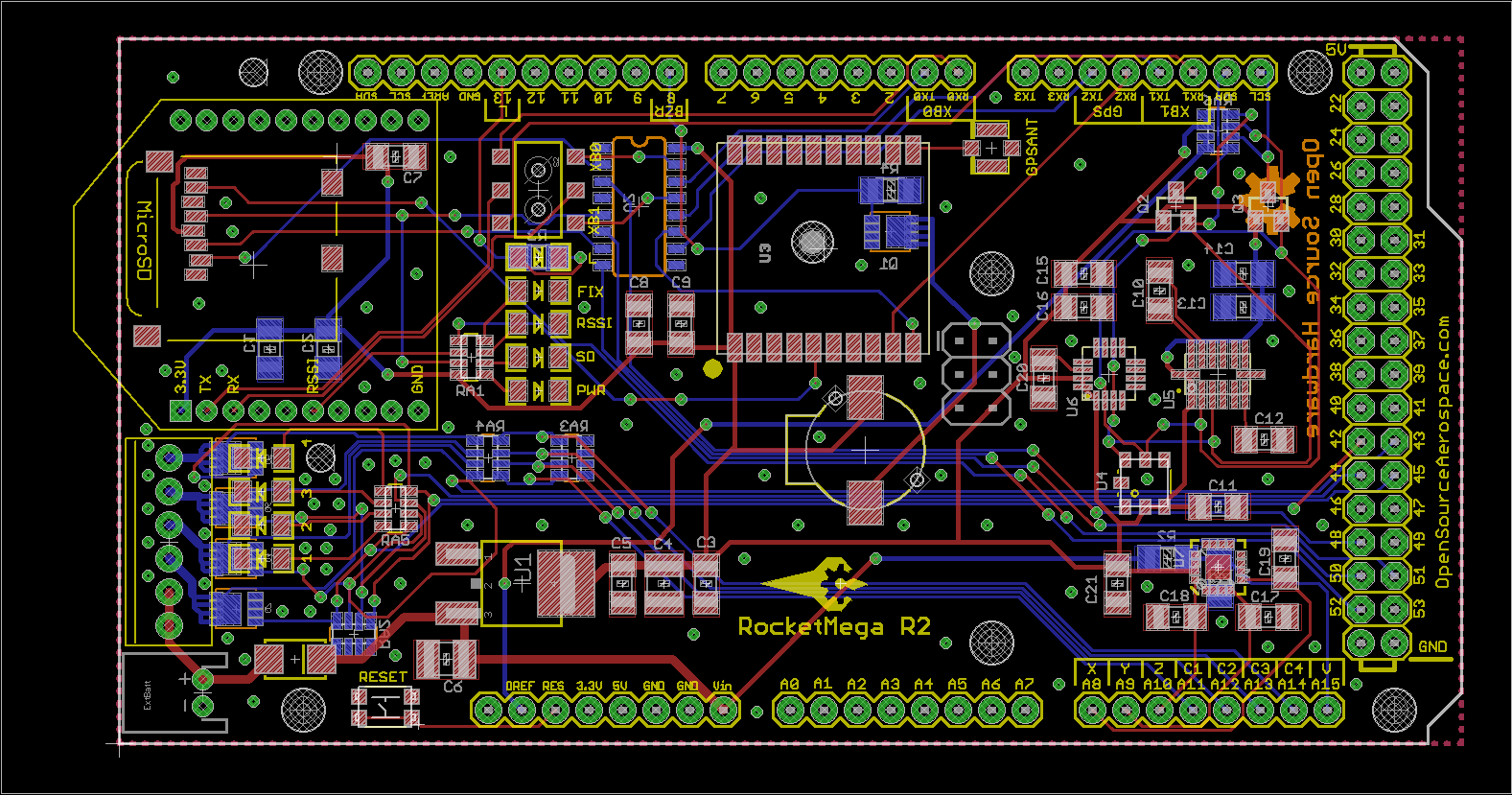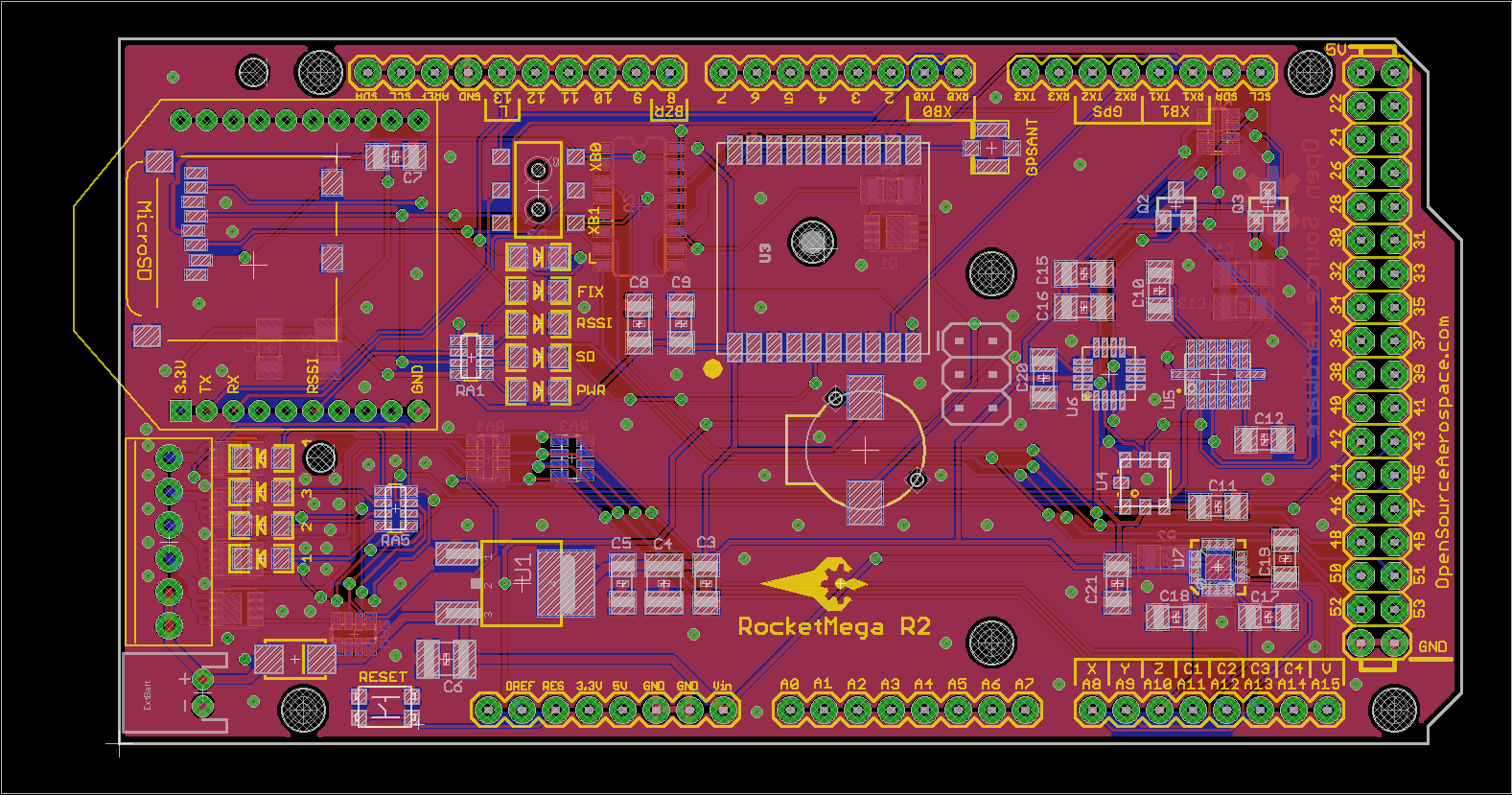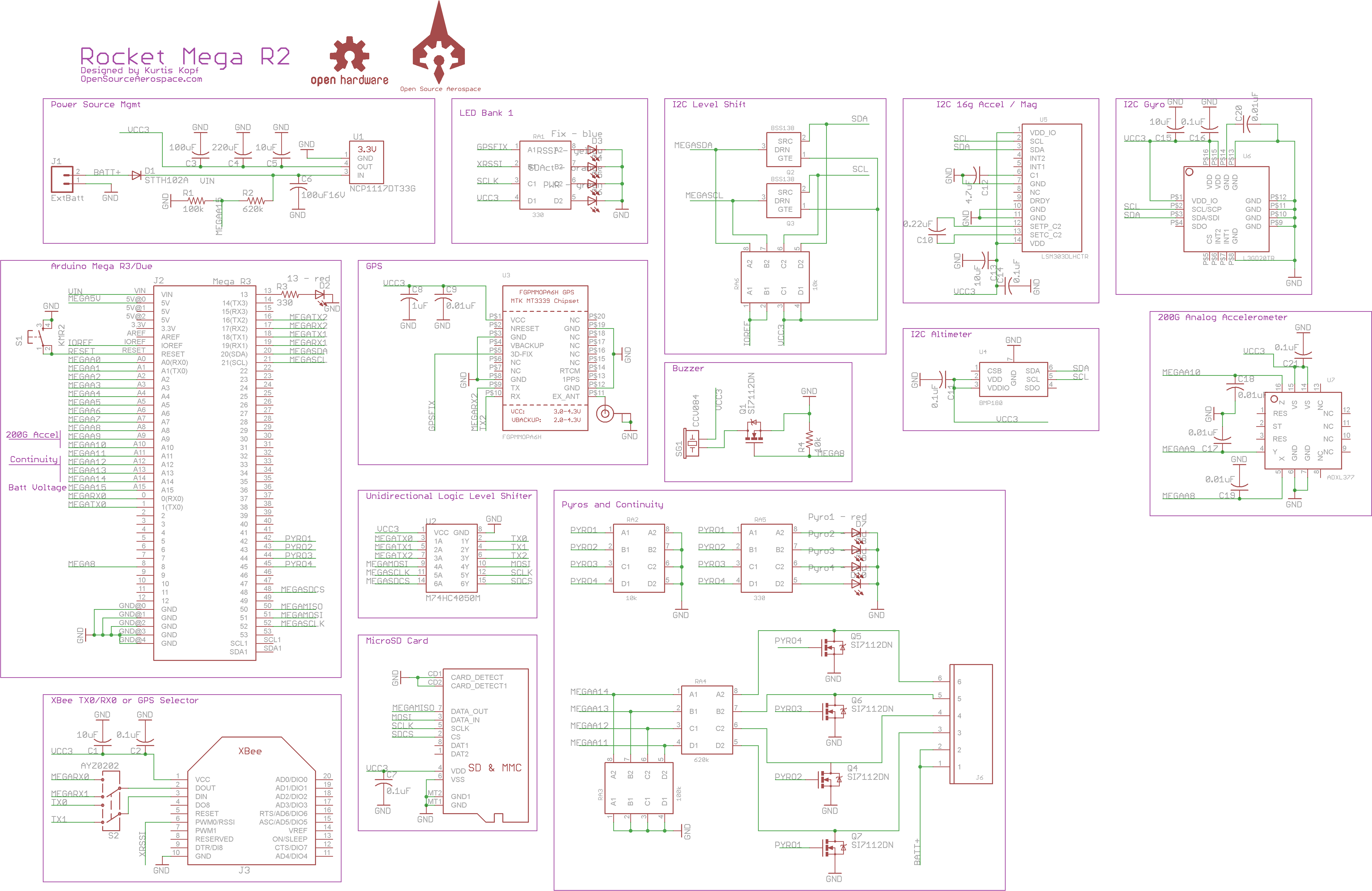I have a decent amount of interest (thanks guys!), but my lawyer says I'd have to incorporate an LLC or something similar to reduce my liability in case something goes wrong on a high power launch. There are a bunch of fees associated with that in Cali, unfortunately, but I'm figuring out all of the details.
For Brazil: I'd have to check export laws, etc. on where I can send these things. I imagine it won't be an issue, but I don't know yet.
The clear winners so far for preference:
- Unit as an Arduino Shield
-- With a healthy bunch requesting a standalone system, and even some processor upgrades
- A "V2" board seems to be the general preference
- Mixed feelings on the Kickstarter idea, mostly positive
- Quite a few people ready and willing to help on hardware and software
My plan for now is to make some improvements to the board (v2), and then start a group buy or small funding project.
Improvements listed (so far) for my V2 plan:
- tie VIN and EXTBATT together (allowing the JST plug to power the main Arduino board)
- replace the TI Power MUX with either a P-FET setup or a diode
- replace the two large electrolytic capacitors with ceramic capacitors
- replace the 5V 55G 2-axis accelerometer with a 3.3V 200G 3-axis accelerometer (unless I can find one with a lower scale at the same voltage)
- remove 5V regulator
- add a 1A fuse
- move the XBee uart channel select switch and LED down for easier view/access (the XBee currently covers them)
Overall, this should remove some complexity from the board. I started mapping out these changes the other night, and am currently trying to teach myself about P-FETs to see if it's worth using one over a diode.
If anyone wants to help with the hardware design for V2, PM or email me! That might help me get it done more quickly.
Several people brought up their discomfort with this as a shield, mainly because of the press-fit pin connections. Unfortunately, for the price range people requested, I won't be able to do a run of completely integrated boards for the first time around. My plan would be to spin that off as a separate project (same software), eventually offering both the shield and the completely integrated board (maybe a couple of months from now), and possibly even a modular setup.
I also had some people express concerns about using the microSD card losing continuity due to vibration of the pins. I'm trying to find a better solution with lots of storage space, but don't have one yet. Testing with my RC car, I can generate data files of about a 1MB in less than 10 minutes of goofing off, so I'm logging a substantial amount of data. In the meantime, there are several successful examples of very large rockets launching with microSD cards in slots (Qu8k is one of them). Hopefully it's not an issue, but we can try to design the software accounting for potential loss of the card mid-flight. Definitely a risk to be noted.
I'm working on an avionics bay for one of my 2.6" rockets (even as I type this), so hopefully I can get some test flights in shortly. I've had some "life changes" recently that have made this a bit more difficult than I had anticipated.
Again, everyone, thank you for the support! This has been an awesome experience and experiment for me so far.






